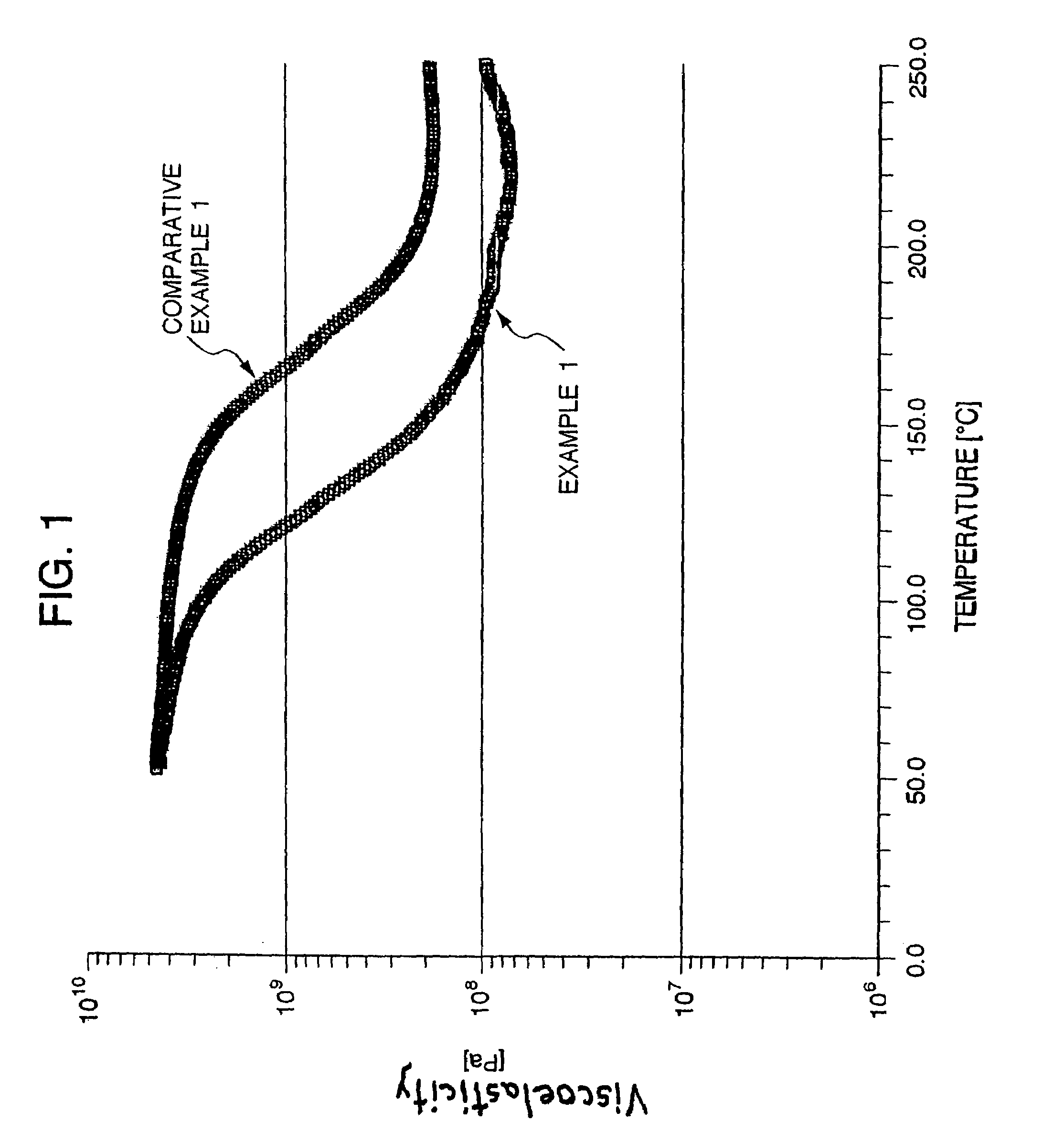Photo-cured film, and photosensitive element, printed wiring board and semiconductor package using such film
a technology of photosensitive elements and film, applied in the field of photocurable resin composition, can solve the problems of reducing resist performance, conventional liquid photosensitive resist still has problems in practical characteristics, and screen printing has had a difficult time forming more precise resist patterns, etc., to achieve the effect of reducing the number of films
- Summary
- Abstract
- Description
- Claims
- Application Information
AI Technical Summary
Benefits of technology
Problems solved by technology
Method used
Image
Examples
synthesis example 1
[0063]220 Parts of YDCN 704 (cresol novolak type epoxy resin, which corresponded to the said formula (I), where X=olycidyl and R=methyl and was commercially available from Tohto Kasei Co., Ltd., Japan) were admixed with 72 parts of acrylic acid, 1.0 parts of hydroquinone and 180 parts of carbitol acetate, followed by heating at 90° C. with stirring to dissolve the reaction mixture. Then, the reaction mixture was cooled to 60° C. and one part of benzyltrimethylammonium chloride were added thereto. Then, the reaction mixture was subjected to reaction with heating to 100° C. until the acid value of solids reached 1 mgKOH / g. Then, 152 parts of tetrahydrophthalic anhydride and 100 parts of carbitol acetate were added thereto, and the reaction mixture was subjected to reaction with heating to 80° C. for about 6 hours, and then cooled, and diluted with carbitol acetate so that the solid concentration could be 60%, whereby acid-modified, vinyl group-containing epoxy resin (I) was obtained.
synthesis example 2
[0064]330 Parts of EPPN5O2H (salicylaldehyde type epoxy resin, which corresponded to the said formula (III), where X=glycidyl and was commercially available from Nippon Kayaku Co., Ltd., Japan) were admixed with 144 parts of acrylic acid, 1.5 parts of hydroquinone and 250 parts of carbitol acetate, followed by heating to 90° C. with stirring to dissolve the reaction mixture. Then, the reaction mixture was cooled to 60° C., and two parts of benzyltrimethylammonium chloride were added thereto. Then, the reaction mixture was subjected to reaction with heating to 100° C. until the acid value reached 1 mgKOH / g, then cooled and diluted with carbitol acetate so that the solid concentration could be 60%, whereby acid-modified, vinyl group-containing epoxy resin (II) was obtained.
synthesis example 3
[0065]330 Parts of EPPN502H (salicylaldehyde type epoxy resin, which corresponded to the said formula (III), where X=glycidyl) and was commercially available from Nippon Kayaku Co., Ltd., Japan) were admixed with 144 parts of acrylic acid, 1.5 parts of hydroquinone and 250 parts of carbitol acetate, followed by heating to 90° C. with stirring to dissolve the reaction mixture. Then, the reaction mixture was cooled to 60° C., admixed with 2 parts of benzyltrimethylammonium chloride and subjected to reaction with heating to 100° C. until the acid value reached 1 mgKOH / g. Then, the reaction mixture was admixed with 230 parts of tetrahydrophthalic anhydride and 180 parts of carbitol acetate, subjected to reaction with heating to 80° C. for about 6 hours, then cooled and diluted with carbitol acetate so that the solid concentration could be 60%, whereby acid-modified, vinyl group-containing epoxy resin (III) was obtained.
PUM
| Property | Measurement | Unit |
|---|---|---|
| elastic modulus | aaaaa | aaaaa |
| temperature | aaaaa | aaaaa |
| elastic modulus | aaaaa | aaaaa |
Abstract
Description
Claims
Application Information
 Login to View More
Login to View More - R&D
- Intellectual Property
- Life Sciences
- Materials
- Tech Scout
- Unparalleled Data Quality
- Higher Quality Content
- 60% Fewer Hallucinations
Browse by: Latest US Patents, China's latest patents, Technical Efficacy Thesaurus, Application Domain, Technology Topic, Popular Technical Reports.
© 2025 PatSnap. All rights reserved.Legal|Privacy policy|Modern Slavery Act Transparency Statement|Sitemap|About US| Contact US: help@patsnap.com



